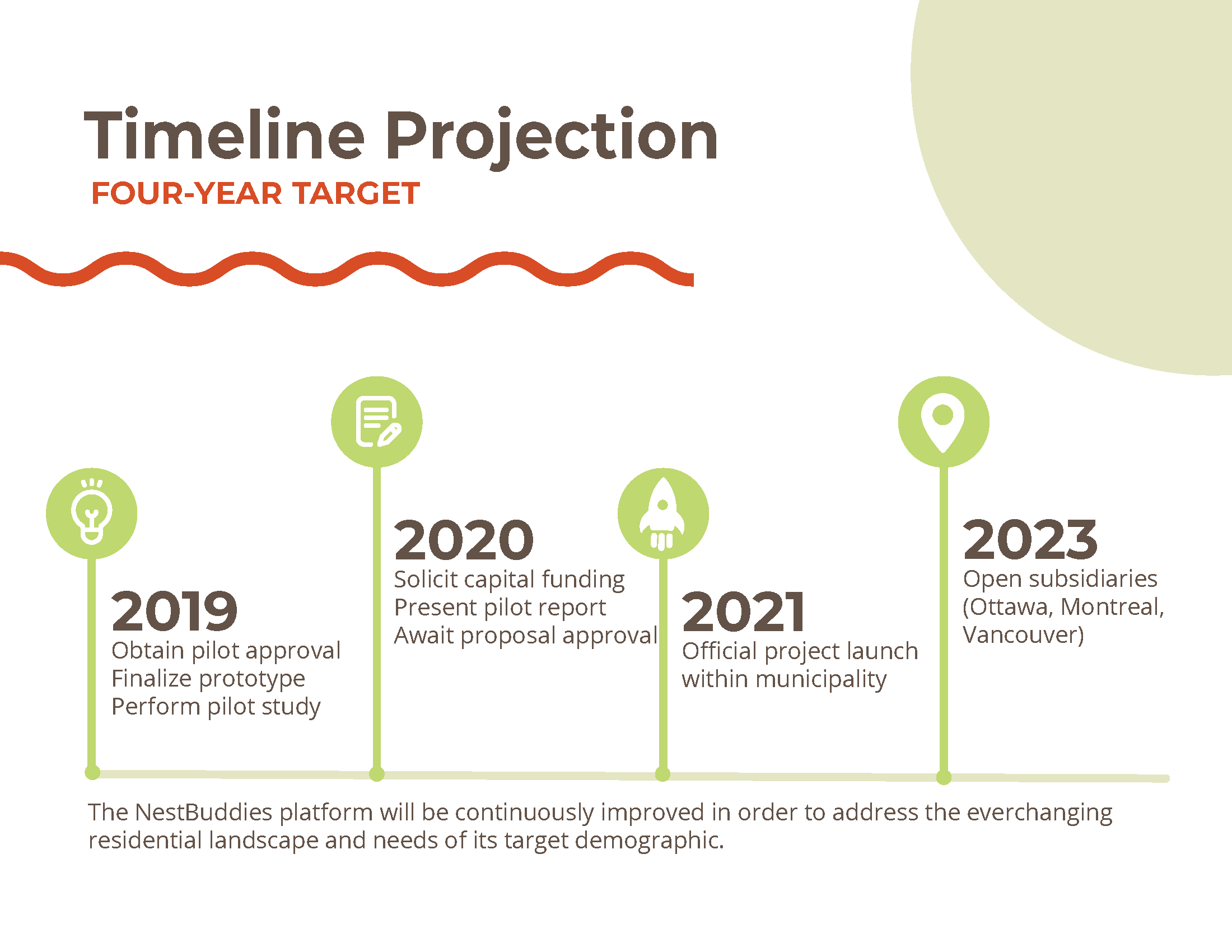Organization | ElleHack
Type | MLH 2019 Hackathon Competition
Team | Emma Tsai, Amrita Maharaj, Umai Balendra, Ashley Chen
My Role | Ideation, Logo Design, Branding, UI components and design
Tools | Sketch, Invision, Zeplin, Adobe Illustrator, HTML, CSS, Bootstrap
Duration | Feb 1 – Feb 3
Problem Statement
By 2036 it is predicted that Canada will have 9.9 - 10.9 million seniors (65+ years old). Social isolation has a major impact on the health and well-being of seniors. Rising costs of housing in major cities across Canada has left seniors with more space than they need as well as 7.4% of seniors have faced hidden homeless situations.
Rising cost of healthcare and reduction in social programs leave a gap in terms of senior care. The hot housing market in Toronto creates issues especially for the overlooked group: the growing senior population. According to the Canadian Centre for Economic Analysis, seniors either have more space than they need, and face the rising cost of community centres with high rates and long waiting lists. The financial stress is exacerbated by social isolation that this age group often experiences; these factors are detrimental to both their mental and physical wellbeing, which in turn drives up healthcare costs.
How Might We…
How might we find a cost-effective housing solution that increases socialization among seniors, in order to improve their health and well-being?
Mapping out the flow and interface design
Seniors who have spare bedrooms can opt to rent them out to peers at a price
Seniors seeking affordable housing can find a shared home suited to their needs
This goes beyond simply promoting socialization leading to better well-being
It leverages the existing problem of empty rooms in Canada
It reduces the costs of eldercare by optimizing use of healthcare resources: if seniors living in the home have similar health conditions, healthcare providers only have to make one visit rather than several visits to multiple locations
It reduces risk of seniors ending up homeless by offering affordable homes on demand, and fast Because this is a public service platform, it does not profit off of users
How it works
The Home Page describes the service, and outlines application and approval process.
On the Home page, 2 call-to-action buttons leads to intuitive form to set up profile on basic criteria. This includes first language, preferred location and budget (housemate only), sleeping schedule, accessibility needs. They also complete a Basadur test, which matches housemates with different problem-solving styles to form a symbiotic living environment.
Use Algorithm to match potential housemates; then, a social worker perform background check on each user, review the match, and set up a meeting among all potential housemates
Before the meeting is set up, the users have the chance to see the profiles of their matches and back out if they’re not satisfied.
After the meeting, the user can accept or decline the matches and coordinate a time amongst themselves for move in date
At any time in the process they can see the social worker contact information.
Adoption
A pilot study will be completed with the consent of the City of Toronto at Community Centres across the GTA. Access to Social Workers will be key in establishing our pilot study and will seek assistance from the City.
During the early phases we plan to continuously revise to improve the platform, in order to better address ever-changing residential landscape and needs of its target demographic.





